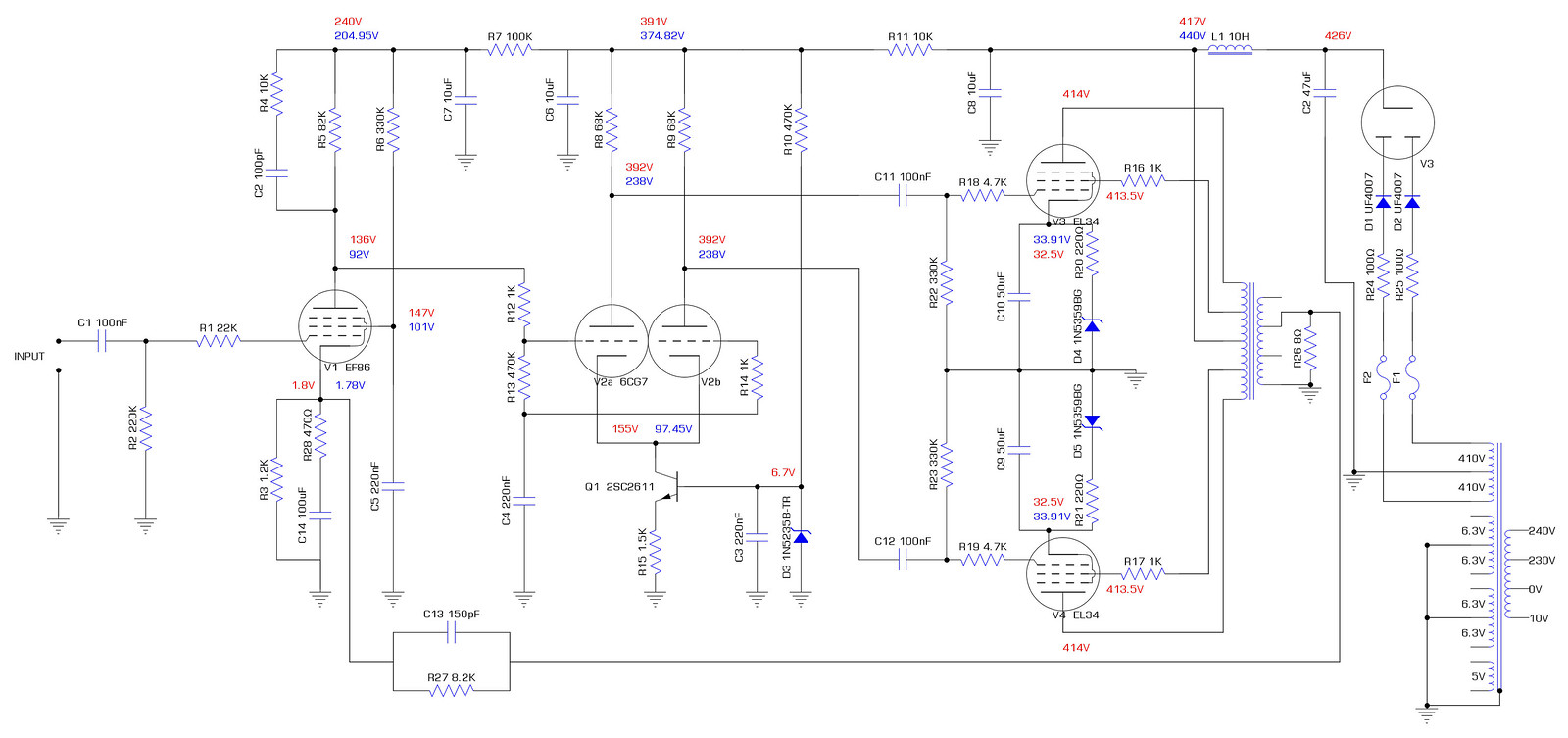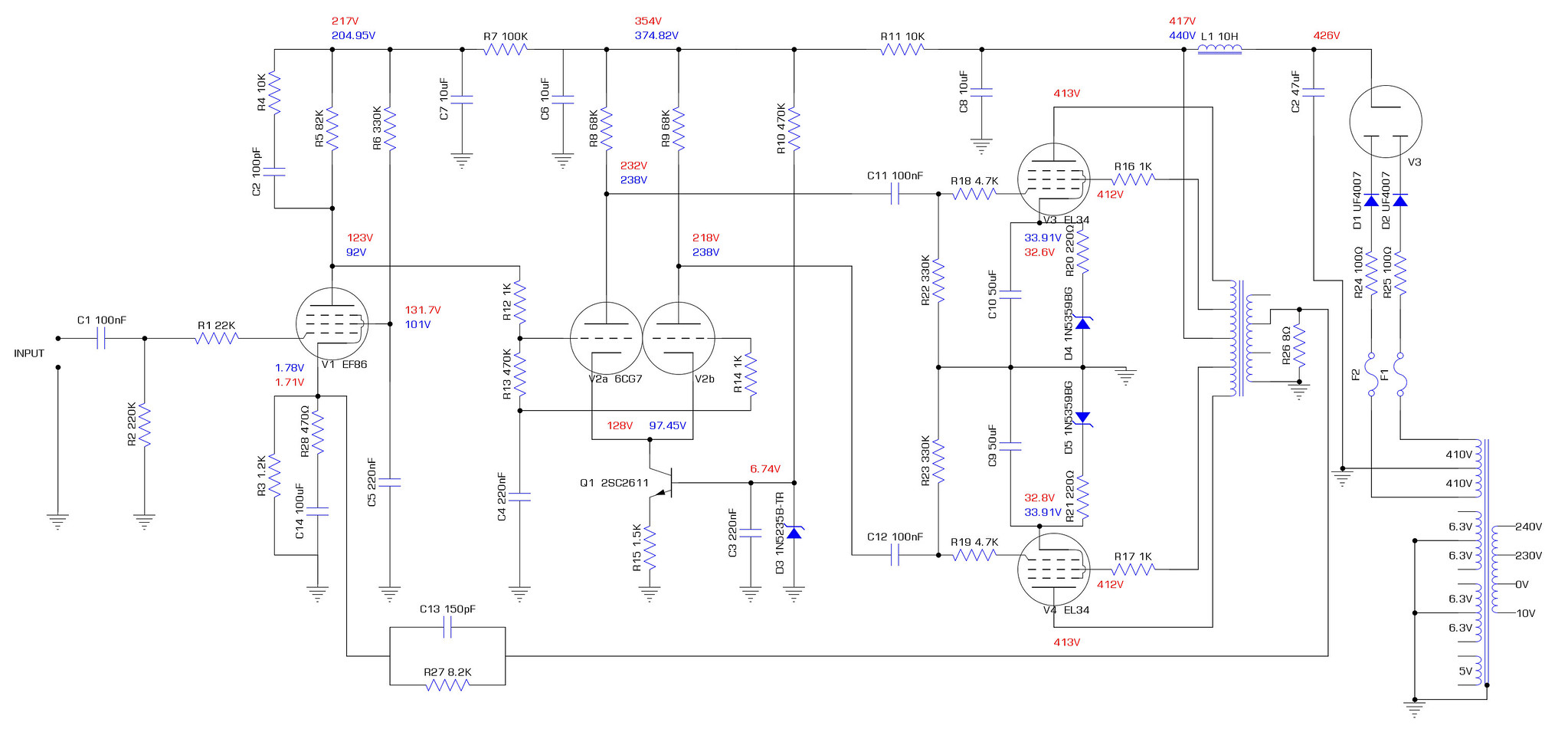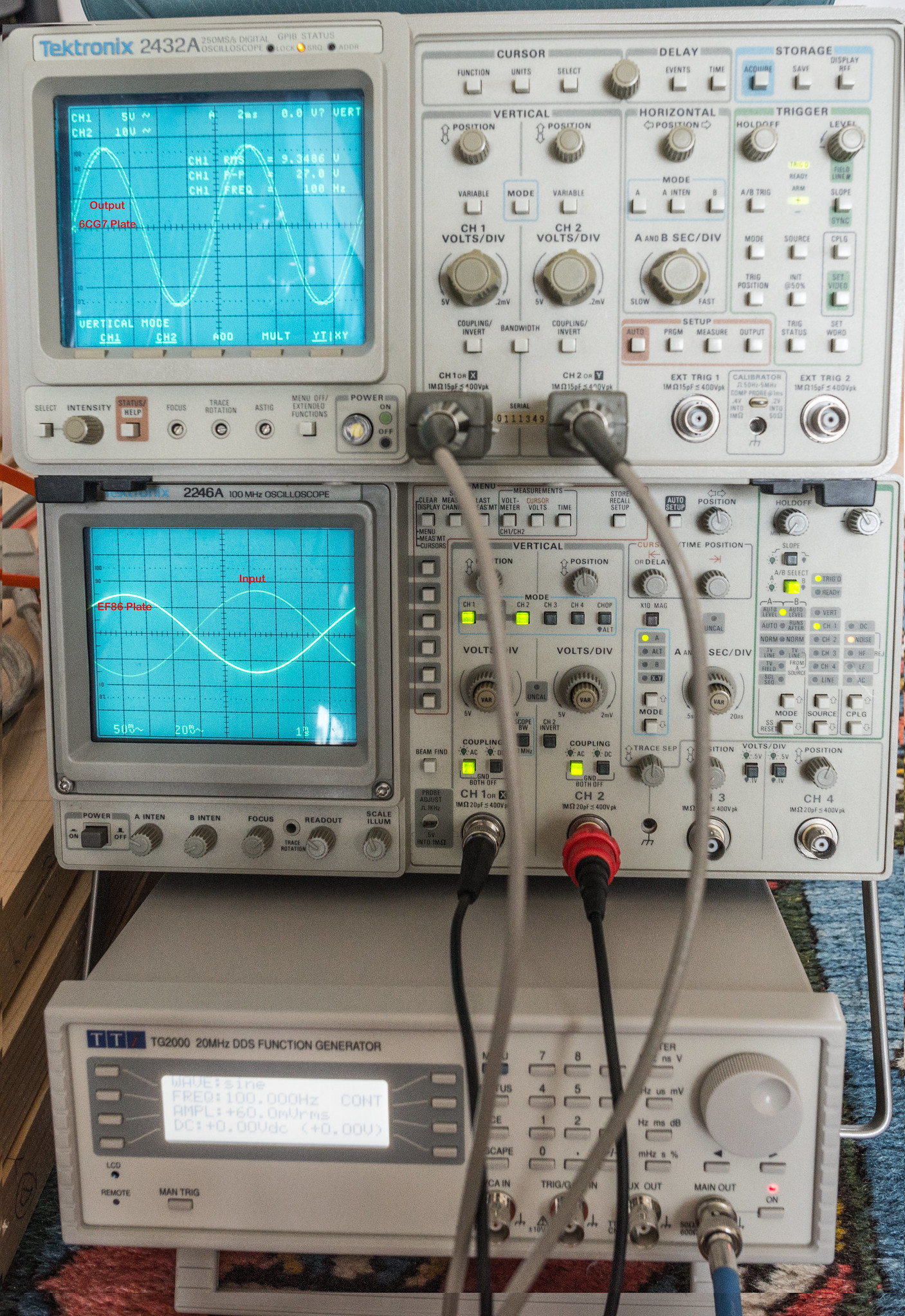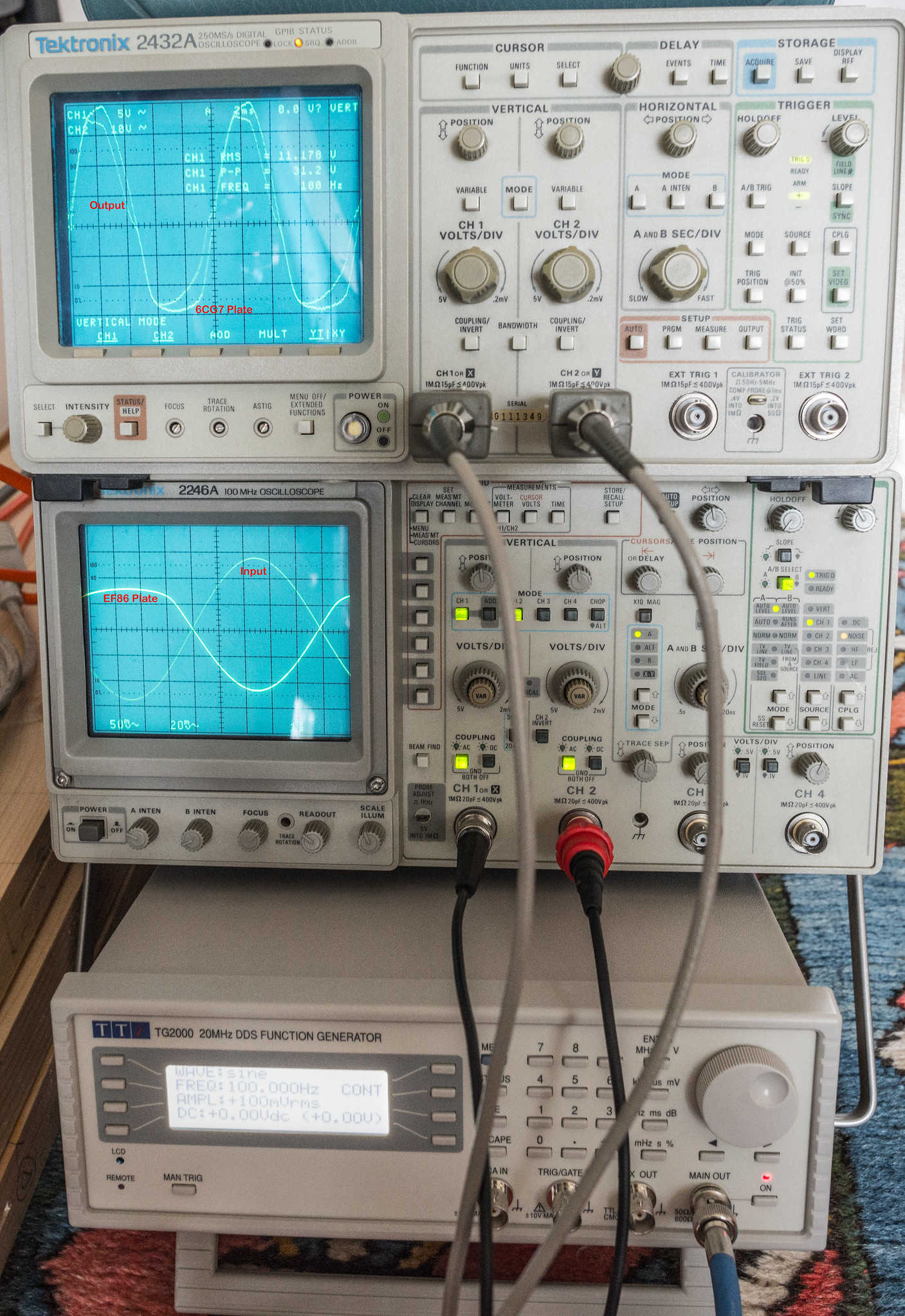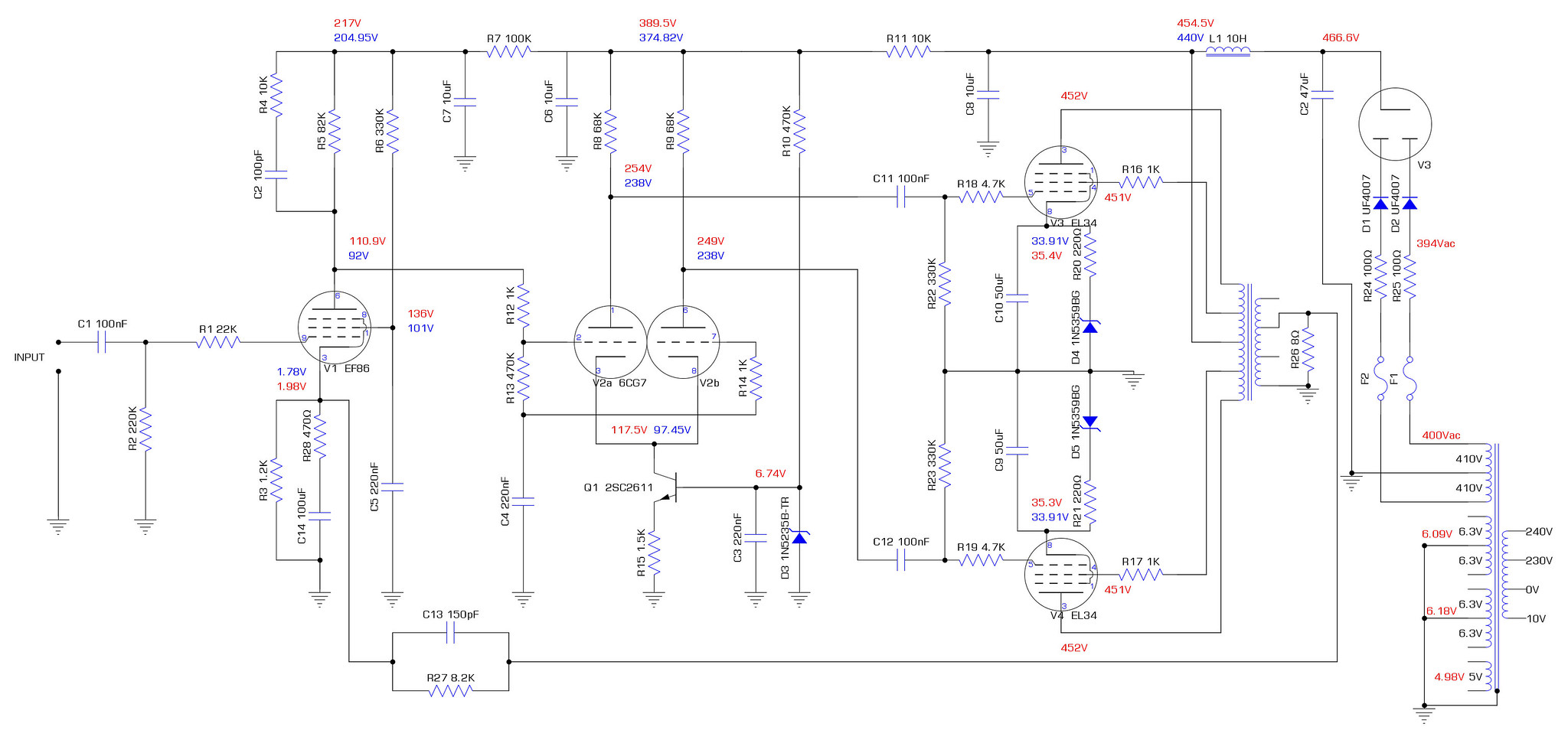Interesting to read / watch as the story unfolds! Those voltages look SCARY.
I've seen over 500V a few times. The one time I tested it without the output valves in place I saw well past 500V. It's still very small in comparison to the EHT in old television set cathode ray tubes. IMO, my F&T 47uF capacitor which is only rated at 500V is probably going to need to be replaced as I'm seeing a brief peak of 510V at switch on which isn't going to help it's lifespan.
I made some adjustments to the cathode on EF86 and ran some tests. First thing I tried was removing the 100uF cap and 470R resistor leaving only the 1.2K resistor in place. Zero effect observed, voltages remained the same. I then swapped out the 1.2K resistor for a 1K. I also swapped out the JJ GZ34/KT77's for EL34B/5AR4. The JJ GZ34 clearly has more sag than the sovtek 5AR4 as the voltages out of it were ~10V higher. The behaviour of both V1 & V2 seemed to be far better with the voltages being much closer to expected. I also noticed the asymmetric distortion on the output has now gone, only showing slight signs of crossover distortion as the output passes 13Vrms. (21W into 8 ohms)
This is how things were with just the cathode of EF86 changed.

Changed the R6 screen grid resistor to 470K as I wanted to actually see the effect on the voltages across both V1 & V2. I was surprised at how big a difference it actually made everywhere else, yet the screen voltage change was pretty small.
V1 Anode increased by 26V, G2 decreased by 8V and the cathode decreased by 0.15V. V2 anodes remained the same but the cathode increased by 11V.
Anyway, I put the 330K back in as that seemed to produce voltages in line with expectations considering the higher supply voltages. I can't remember where I read it but it said about the screen being a 1:4 ratio with the anode, so 82K*4=328K.
Here is a short video of it under a music test run with speaker attached. (not hifi sound here as the D810 mic isn't great)
I actually left it run for nearly 6 hours as it sounded great. Not a hint of red plating (anode hot spots) this time, all looks healthy in the glow department.
In principal, I'm now left with the challenging part of closing the feedback loop and keeping things stable. No mean feat.


